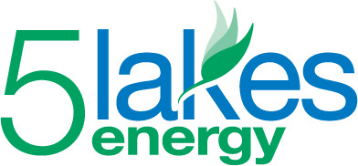2016 Platforms:
“We will enforce the original intent of the Clean Water Act, not it’s distortion by EPA regulations. We will likewise forbid the EPA to regulate carbon dioxide” Republican Platform 2016
The Republican platform largely denies the existence of climate change, expressly rejects the Paris Climate Agreement and the Kyoto Protocol, and calls for an immediate end to funding the U.N. Framework Convention on Climate Change.
“Climate change is an urgent threat and a defining challenge of our time.” Democratic Draft Platform
The Democratic platform embraces President Obama’s goal of an 80 percent reduction in greenhouse gas emissions by 2050, calls for deriving 50 percent of electricity from clean energy sources within a decade, and sets a goal of half a billion solar panels installed within four years – enough renewable energy to power every home in the country.
Donald Trump, unencumbered by cognitive dissonance, says climate change is a hoax, yet is seeking approvals to dump 200,000 tons of rock in County Clare, Ireland to protect his golf course from sea level rise. Meanwhile, the American scientific community has authored a joint letter to Congressional Members urging substantial reductions in greenhouse gas emissions and warning of the imminent risks of climate change. Thirty-one scientific organizations were signatories, citing the “strong evidence that ongoing climate change is having broad negative impacts on society, including … greater threats of extreme weather events, sea level rise, and increased risk of regional water scarcity, heat waves, wildfires, and the disturbance of biological systems.” Internationally, almost 200 scientific organizations worldwide have gone on record affirming both climate change and anthropogenic causation.
Solar – so cheap, so fast
“You could power the entire United States with about 150 to 200 square kilometers of solar panels, the entire United States. Take a corner of Utah… there’s not much going on there, I’ve been there. There’s not even radio stations.” – Elon Musk
Can you think of anything that has dropped more in cost than solar PV? Computer chips and flash drives come to mind, but solar PV is close, with cost falling more than 99 percent in the last 40 years.
In 2010, the Department of Energy launched the Sunshot Initiative – an incredibly ambitious program to reduce the installed cost of utility scale solar energy to $1 per watt by 2020 . As a member of the DOE ERAC Advisory Committee who was there at the beginning, I thought the goal was more aspirational than real. Utility scale solar was then at $4 per watt and a 75 percent reduction in cost – particularly after fairly dramatic cost reductions of recent years – seemed like a long reach. But, astoundingly, the DOE may reach have already reached its goal. Utility scale solar cost fell to $1.38 per watt in 2015 and continues to drop fast.
The International Renewable Energy Agency reports that globally solar PV prices will tumble an additional 59 percent by 2025. Solar is the least expensive electricity source in many markets and is the only practical and readily available choice for electrification in the underserved areas of the world.
How cheap is solar energy? Last June, Austin Energy shocked many energy prognosticators by signing a purchase power agreement for solar energy at less than $0.04 per kwh. A week later, NV Energy in Nevada contracted for 100 megawatts of solar energy for $0.0387 per kwh – very likely the cheapest source of new power available anywhere in the United States. Both the Texas and Nevada solar deals include the 30 percent investment tax credit, or ITC. Then last month the Dubai Electricity and Water Authority announced that the winning bid for a huge 800 MW solar contract was $0.029 per kwh – unsubsidized. Bloomberg New Energy Finance projects costs falling into the future with solar PV representing 43 percent of all new electric generation capacity to be added globally in the next 25 years.
Employment in the solar industry continues to grow with 35,000 new jobs added 2015, increasing the solar workforce in the U.S. to 209,000. This extraordinary growth has occurred despite the fact that labor efficiency – solar jobs per megawatt of solar installed – increased by 100 percent in the last five years. It took 75 workers to install a megawatt of solar in 2010, but only 37 workers in 2015. Decreasing costs and improved labor efficiency will combine to make solar the least cost option in all energy markets in less than a decade.
Joe Romm has done a great piece on the declining cost of solar, complete with charts and graphs.
